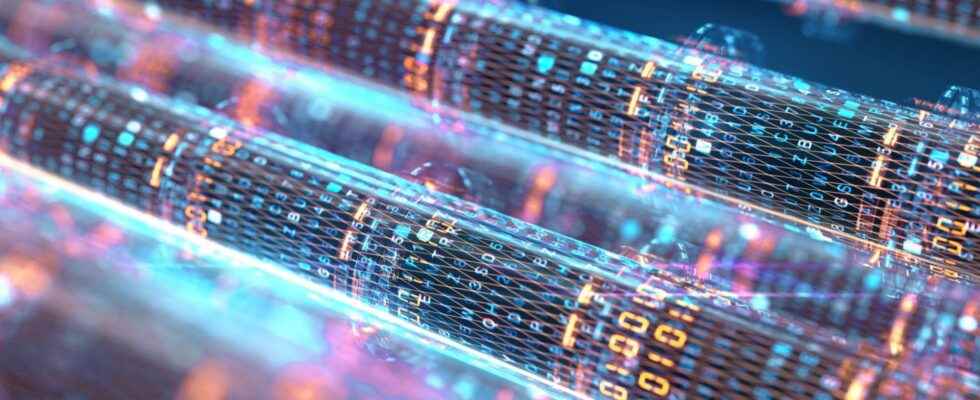ATM means Asynchronous Transfer Mode, which translates to “transfer mode asynchronous is a network technology, which appeared in the early 1990s, managing the transport of the voice, of the video as well as that of data by guaranteeing a quality of service. ATM employs a technique of switching halfway between the circuit switching (telephony) and packet switching (X25).
This is a protocol level 2, created with a view to transmitting data and voice on the same line. Thereby :
- it designs a unified network standard;
- it allows multiplexing of data, in other words to select them, to transmit them on a single output line. It thus uses signaling digital ;
- it increases the gears processing and switching: the debits are 155.520 Mbit/s or 622.080 Mbit/s and the speeds prove to reach 10 Gbit/s.
The different cells are processed asynchronously with respect to the others, pending the process of multiplexing, following the MRF technique (Media Resource Function Server) or CT. CT, or time division multiplexing, is a time-division multiplexing, which allows synchronous or asynchronous streams to be transmitted via a synchronous link. The multiplexer separates and reorders the movement different channels to put it back in order. They are thus integrated into a flow of data synchronous.
What is the ATM used for?
ATM transmits much more data and information than Ethernet, for example. Its uses are therefore more numerous, it is richer, more powerful and more effective.
The transfer of multiple data and information
ATM can carry:
- from data packets ;
- of the voice;
- of the video.
It is therefore more sophisticated than ethernet, token ring or FDDI.
Better use of bandwidth
Unlike synchronous networks, theAsynchronous Transfer Mode improve the use of bandwidth physical. Multiplexing allows it to use communication blanks to ensure data transfer. It is therefore a particularly effective technology.
How does ATM work?
ATM relies on highly sophisticated technologies such as switches or specific identifiers. It is available on a large number of networks because its users appreciate its effectiveness.
Switches and identifiers
Before ATM switches begin to transfer data, identifiers recognize it. They use the Virtual Channel Identifier (VCI) or Virtual Path Identifier (IPV). Packs of 53 bytes of data include 5 header bytes which indicate the destination of the packet and indicators necessary to know in particular the quality of service (Quality Of Service).
It is the ATM switches that proceed to the reception of the packets, carry out their demultiplexing, their orientation and their remultiplexing towards the following switches. It is therefore a technology that is as complex as it is efficient, allowing information to be transmitted and sorted as quickly as possible.
ATM and networks
L’Asynchronous Transfer Mode can theoretically be used infinitely, even if the power of the switches and the speed of the optical fiber necessarily limit its use. ATM is used:
- in the year (Local Access Network) or local network;
- in WAN (Wide Access Network) or long distance network.
It is acclaimed by users as its efficiency is great. The multiplexer reveals all its capabilities.
You will also be interested
[EN VIDÉO] The Incredible Journey of Global Internet Traffic When we connect to the Internet, our data travels a very long way. An email thus travels an average of 15,000 km to reach its destination!
Interested in what you just read?
